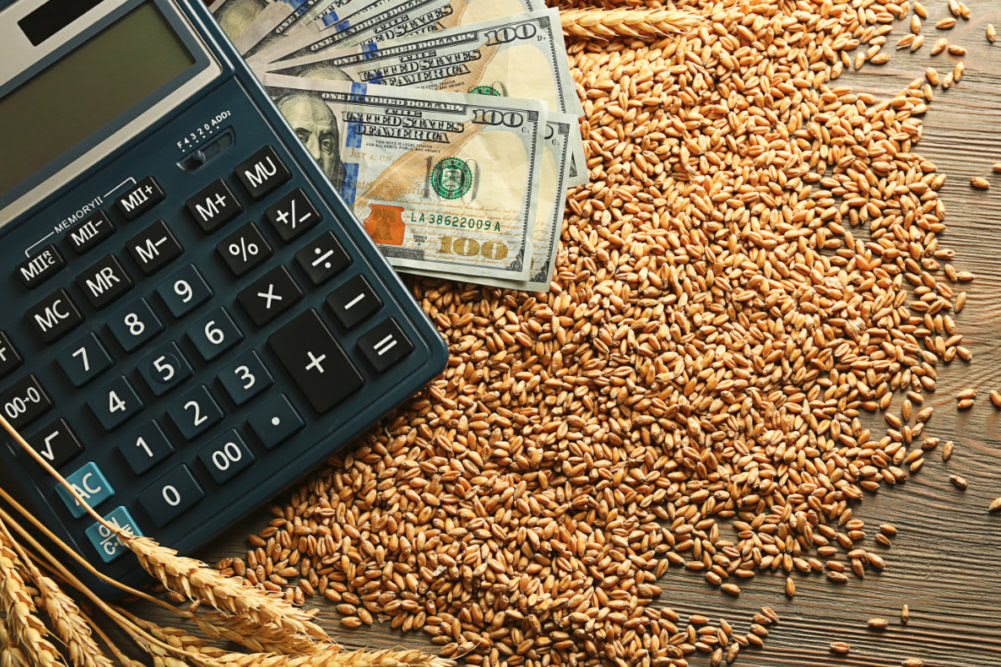The price of wheat, which has been collapsing for 15 days, was on Wednesday 8 March at its lowest level for a year on the European market, in a context where the very good Russian and Australian productions have pushed geopolitical concerns into the background.
On the Euronext exchange, a ton of soft wheat for delivery in May closed at 266.75 euros on Wednesday, its lowest level since February 22, 2022. The decline dragged corn in its wake, with yellow grain at around 262 euros a ton for June delivery, its lowest level since mid-March 2022.
Even on the Chicago Exchange, the bread grain was also down, with Soft Red Winter Wheat (SRW) for May delivery, the most traded, at $6.98 a bushel Tuesday night – compared to $7.055 a week earlier – after falling Monday to its lowest level since 2021.
In the late afternoon, unsurprisingly, the monthly report of the U.S. Department of Agriculture (USDA) on world production estimates, stocks and exports, known as “Wasde”, was “wheat neutral” and drastically revised downward the forecasts of Argentine corn production (-7 million tons, to 40 million tons) and soybeans (-8 million to 33 million tons), due to lack of rain.
According to Sébastien Poncelet, an analyst at Agritel, there are two main reasons for this drop. On the one hand, there is the “stall of Russian wheat”, whose supply is abundant and which is trying to gain market share by lowering its prices. “This leads to a general downward movement, because there is still a lot of wheat to be taken out of Romania and Bulgaria”, at a “usual period of slowdown in purchases from the Middle East, which is waiting for its own harvest in April-May”, he explains.
On the other hand, the markets are optimistic about the renewal of the agreement on the maritime agricultural corridor, which expires on March 18. This agreement, signed by Kiev and Moscow under the aegis of the UN and Turkey, has allowed more than 23.5 million tons of agricultural products to leave Ukraine since August 1.
Despite new invective from the Russians threatening to block this renewal – Moscow complains that its exports of grain and fertilizer, which the Russians are struggling to sell because of the reluctance of operators – “the markets do not believe in a stop to the corridor”, especially because of the position of Beijing.
“In its 12-point plan presented at the end of February, China clearly stated that it was in favor of maintaining the corridor, of which it has become the primary beneficiary, with 4.9 million tons of imported agricultural products, ahead of Spain (4.1 million tons) and Turkey (2.7 million tons),” emphasizes Damien Vercambre, of the Inter-Courtage firm.
The Chinese giant, which had fallen asleep during the health crisis, has indeed “returned to the game” and its weight upsets the previous balances, he notes, noting that the increase in Chinese purchases has recently propelled barley “to the same price as wheat” while it is usually sold about 20 euros less per ton on the European market.
The other element, limiting the rise in prices, the return of rain in Western Europe, at “a favorable time for crops”. “This will not fill the water tables, but it will benefit crops at a key time of growth,” says Vercambre. Vercambre.
Regarding edible oil prices, he remained attentive to the evolution of crop forecasts in Latin America, offering support to U.S. soybean prices. On the Kuala Lumpur stock exchange, after a significant drop, palm oil reached its highest level in a month, due to ongoing floods in Indonesia and Malaysia, the two largest world producers.



Comment here